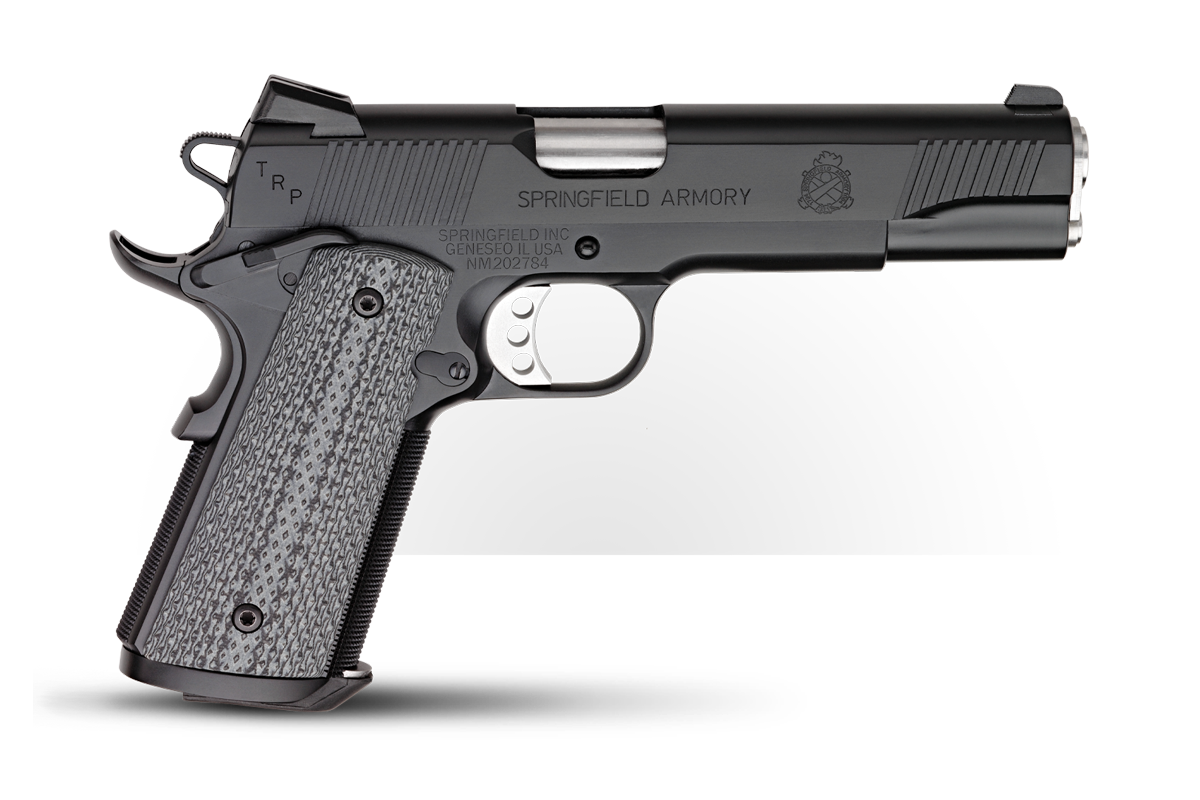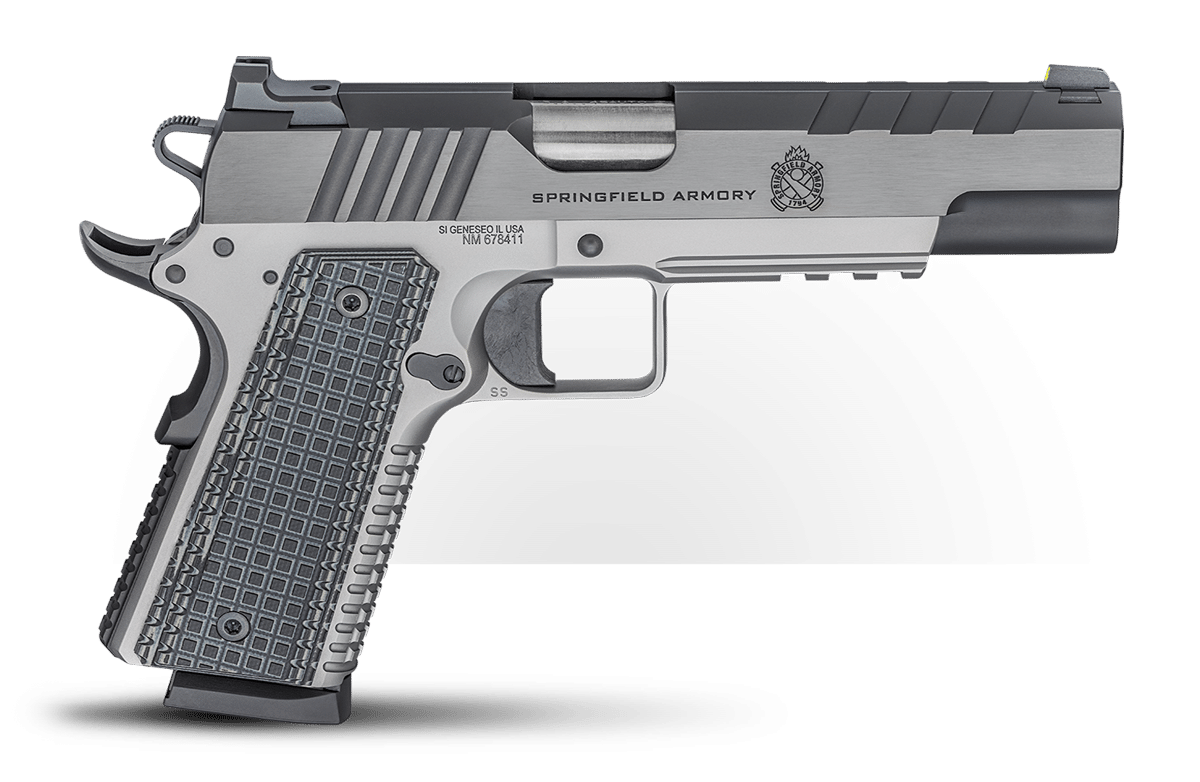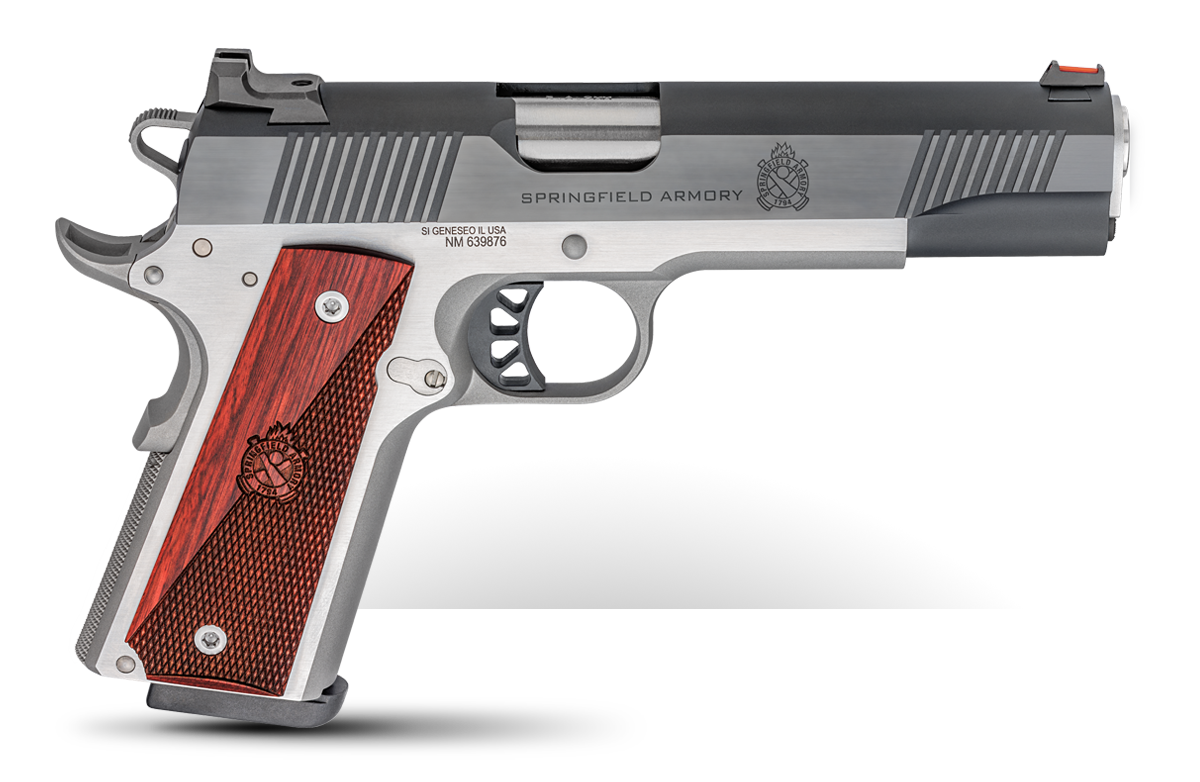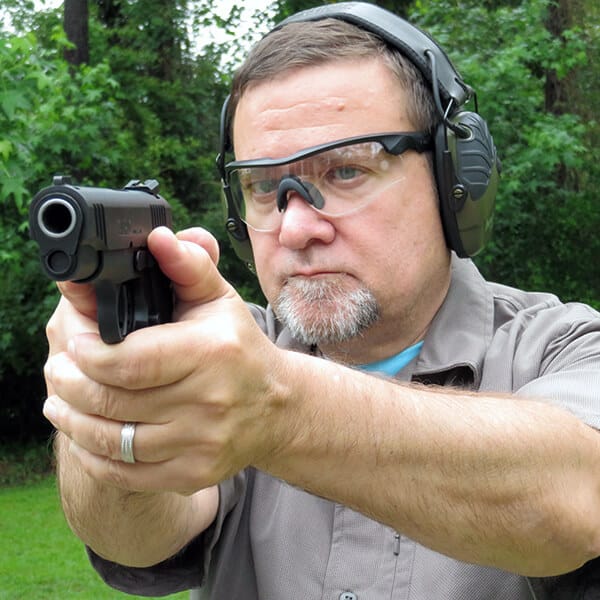Flat Trigger vs. Curved Trigger: Which Is Better?
May 1st, 2023
6 minute read
In this article, we delve into the ongoing debate between flat and curved triggers, exploring their histories, functionalities, and impacts on shooting performance. Robert Sadowski compares two similar pistols, one with a curved trigger and the other with a flat trigger, to determine if one offers an advantage over the other. Is there a measurable difference, or does it just come down to personal preference?
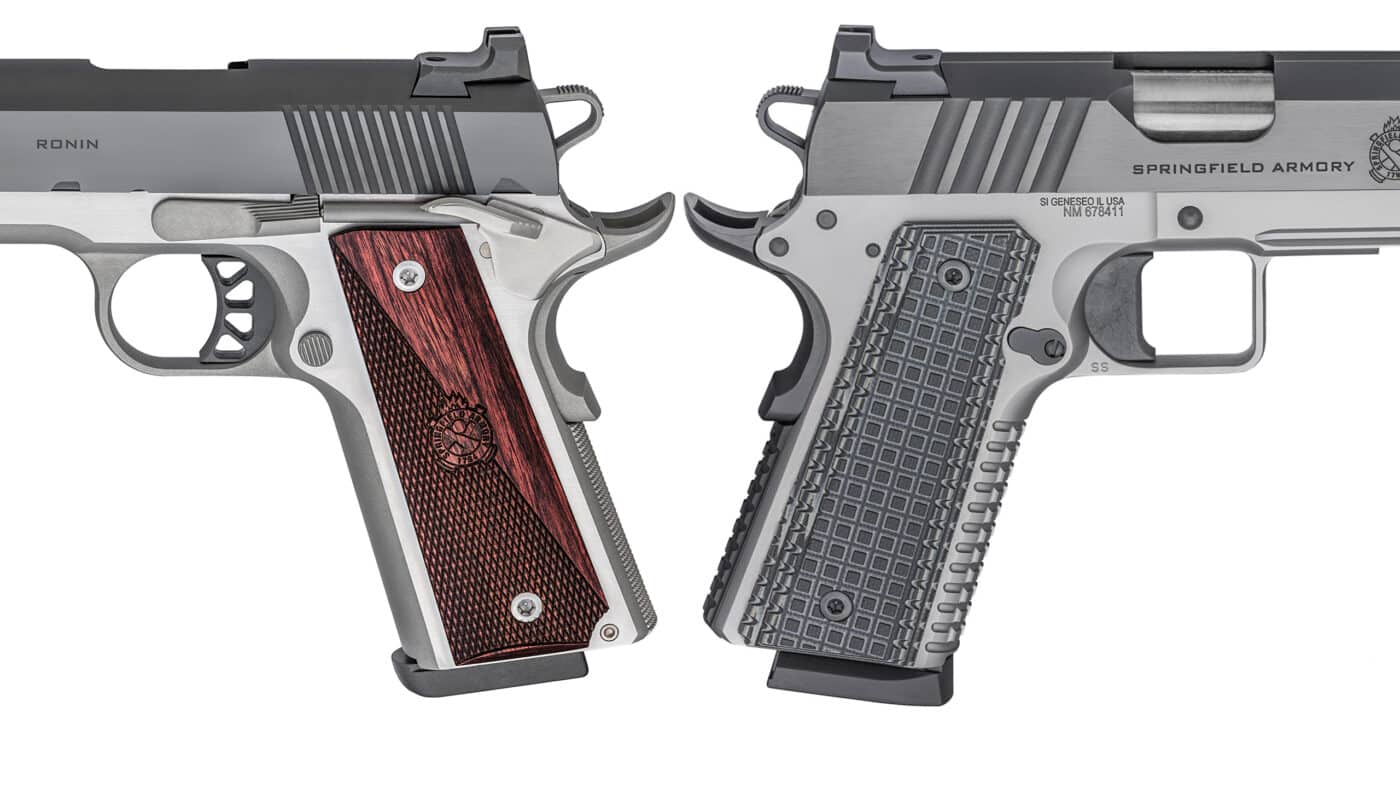
Let’s tackle this question by going back in history a bit. The 1911 was initially designed with a curved trigger. For some, that means that is all the 1911 needs. However, flat triggers in 1911 pistols have been around for decades, and most (but not all) are used by competitive shooters. Custom gun makers have also incorporated flat triggers in EDC and competition guns. Sometimes called a straight trigger, some shooters believe it improves their finger placement when firing the gun.
I am not an early adopter of things new and shiny. But, I do think flat triggers look awesome. On the other hand, I’ve used a curved trigger in my 1911 pistols exclusively. If it’s not broken, don’t fix it, right? So, I wanted to see for myself how a flat trigger versus a curved trigger impacted my shooting. Who knows, maybe I have been wrong all these years?
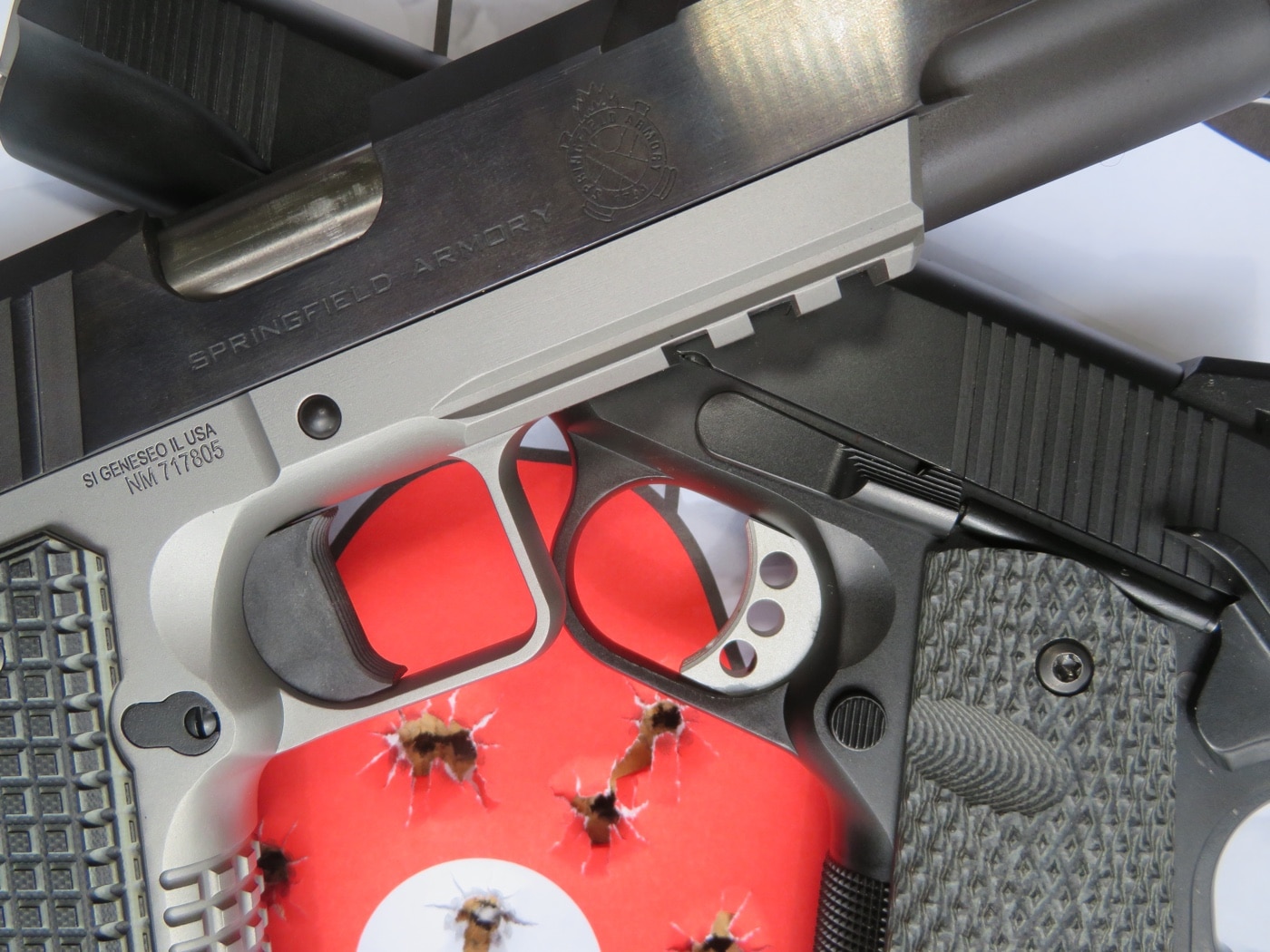
I took my go-to 1911, a TRP with a curved trigger, and matched it up against the Emissary with a flat trigger. Both pistols are full-size Government models with 5” barrels and chambered in .45 ACP. Both have large sights with a dot front sight. So, for all intents and purposes, these are very similar except for the shape of the trigger and external aesthetics. I should also point out the TRP uses a GI-style bushing, and the Emissary uses a bull barrel that mates up directly with the slide. The trigger reach is 2.7” on both pistols. Weight varied by two ounces: the TRP is 42 ounces, and the Emissary is 40.
Trigger Talk
The unique thing about a 1911 trigger is it slides. It doesn’t pivot like it does on a Hellcat or SA-35. On a 1911, the trigger slides in grooves machined inside the frame. With the hammer cocked, you will notice a 1911 trigger has some take-up or pre-travel. This is the point during the trigger press when the rear of the trigger contacts the disconnector, which in turn rotates the sear, which trips the hammer to fire the pistol. All 1911’s have this bit of free travel, so the disconnector has room to reset after the shot is fired.
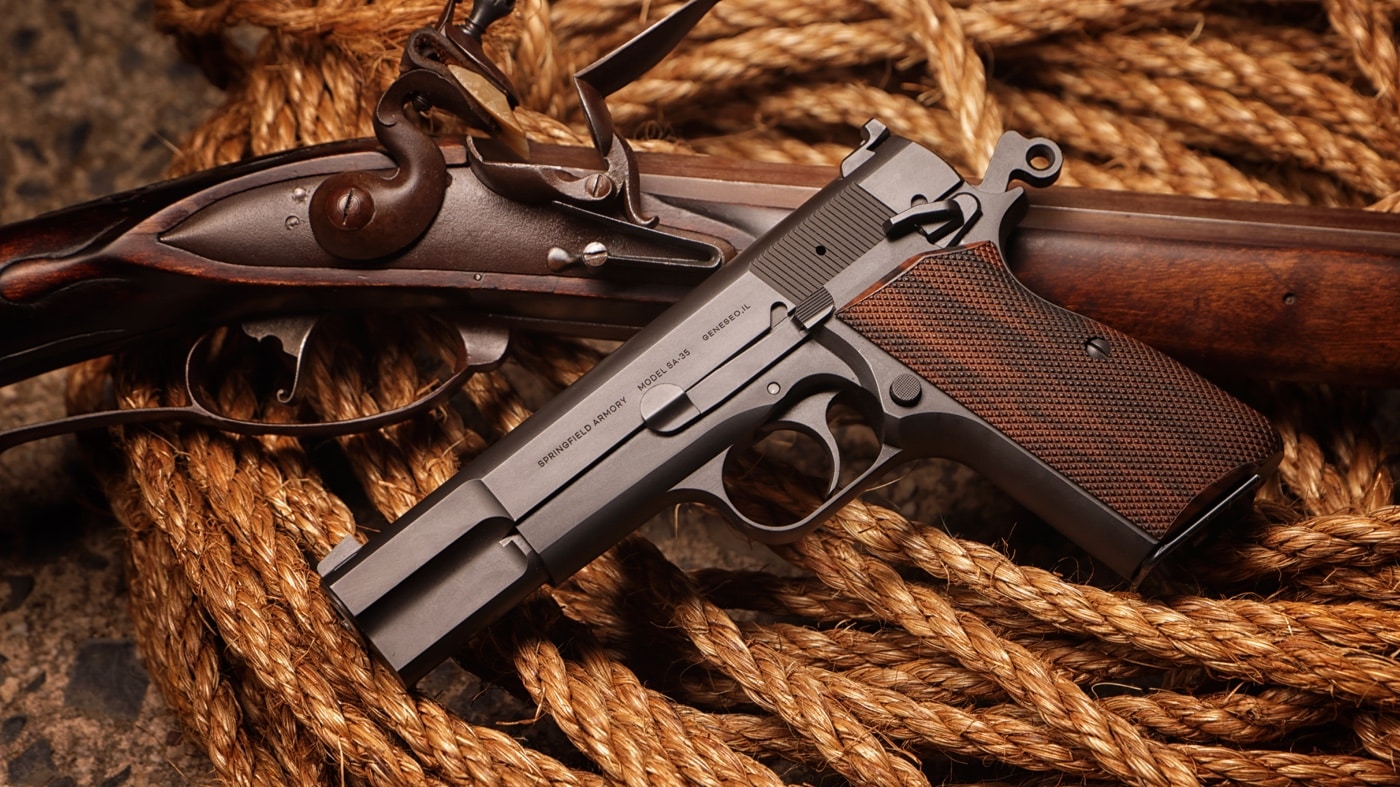
The next phase of the trigger pull after the pre-travel is called engagement, or more commonly known as “hitting the wall”. This is when the trigger is pushing against the disconnector, which pushes against the sear. You’re familiar with this stage since this is where pull weight comes into play or how much pressure — measured in pounds — is required to make the sear drop the hammer. A factory-fresh 1911 typically has a 6- or 7-lb. trigger pull weight. Expect a 3.5-lb. trigger pull weight after a trigger job.
That Creepy Feeling
Once your press is in the engagement phase, you have what is called creep, which is the amount of movement of the sear required to trip the hammer. Less creep means a crisper trigger.
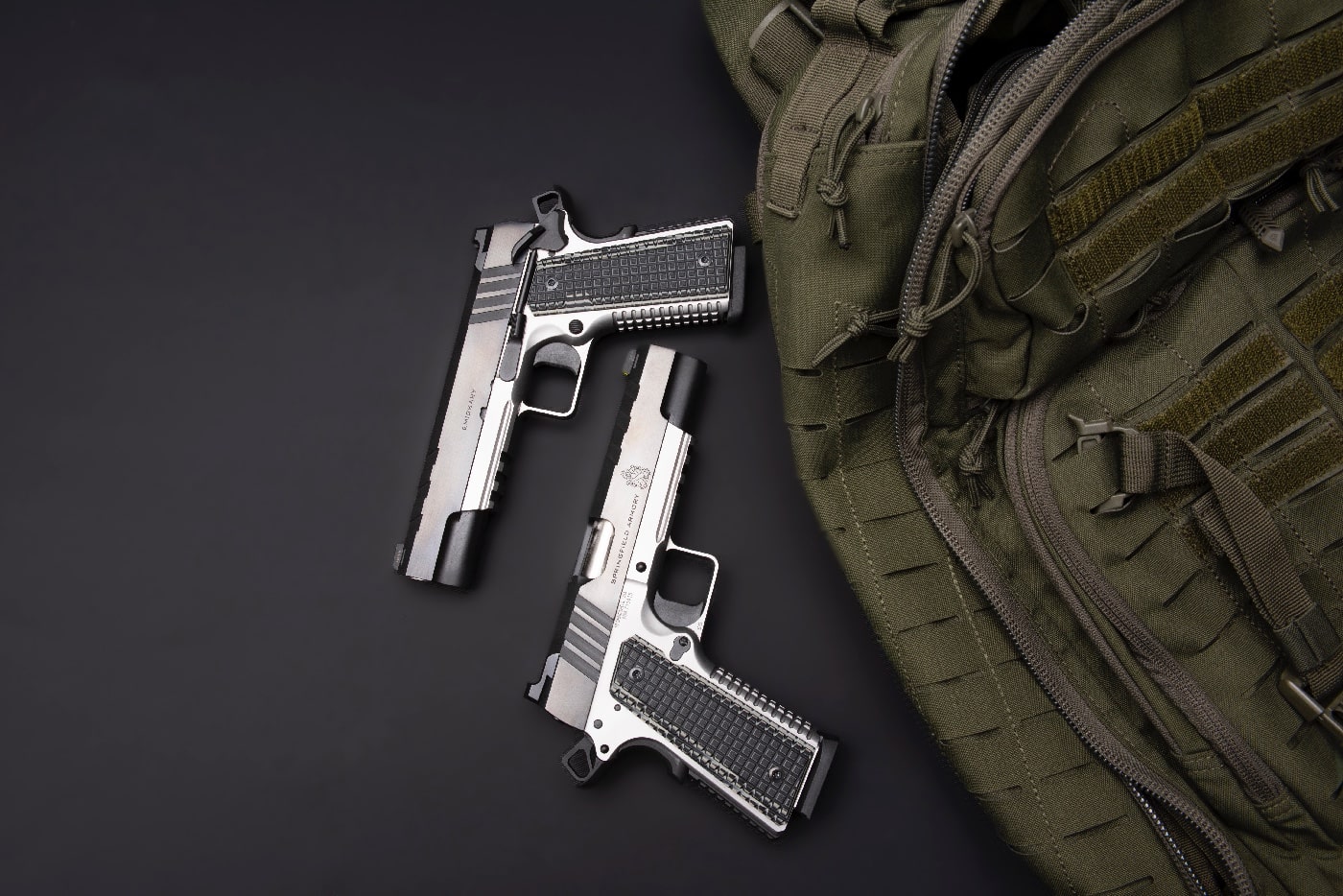
Once the sear releases the hammer, the next phase of a 1911 trigger pull occurs as the actuator continues to move rearward. This is called overtravel. Ever notice the set screw in the face of some 1911 triggers? That is the trigger overtravel screw, which limits the amount of trigger overtravel. Limiting trigger overtravel can enhance accuracy since the trigger has a definitive stopping point.
The last phase of a 1911 trigger pull is the reset. After the shot is fired and the slide cycles, you begin to release the trigger, so the disconnector resets to start the process all over. In quality-built 1911’s, that reset click can be heard and felt. It should be positive and the trigger should be slick as it resets.
Range Time
I ran the Bill Drill and Failure Drill with the two 1911 pistols to see if one trigger style felt better than the other, and if one style allowed me to shoot better and more accurately. The pull weight on the TRP was 4.4 lbs., and on the Emissary it was 5.1. I use the first joint of my trigger finger to press the trigger. While some shooters use the meaty pad of the fingertip, I like the knuckle trigger press technique since it helps me manage recoil better, especially when shooting fast.
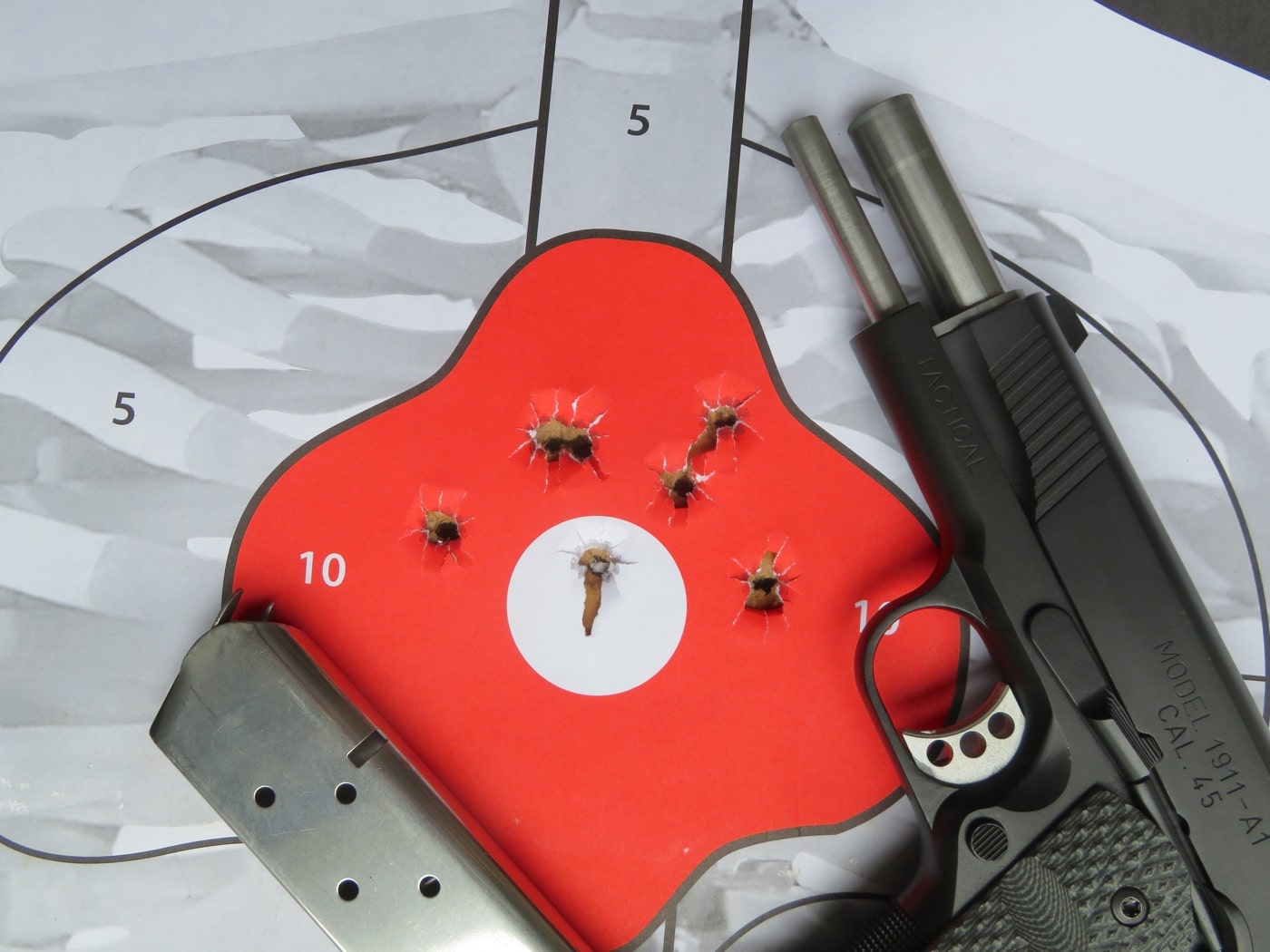
Starting with the Failure Drill, I noticed my hits with the flat trigger were slightly to the left a center, a sure sign of a right-handed shooter slightly pushing the trigger to the left instead of pressing straight back. With the curved trigger, my hits were dead center. It could be a situation of an old dog trying a new trick and simple familiarity.
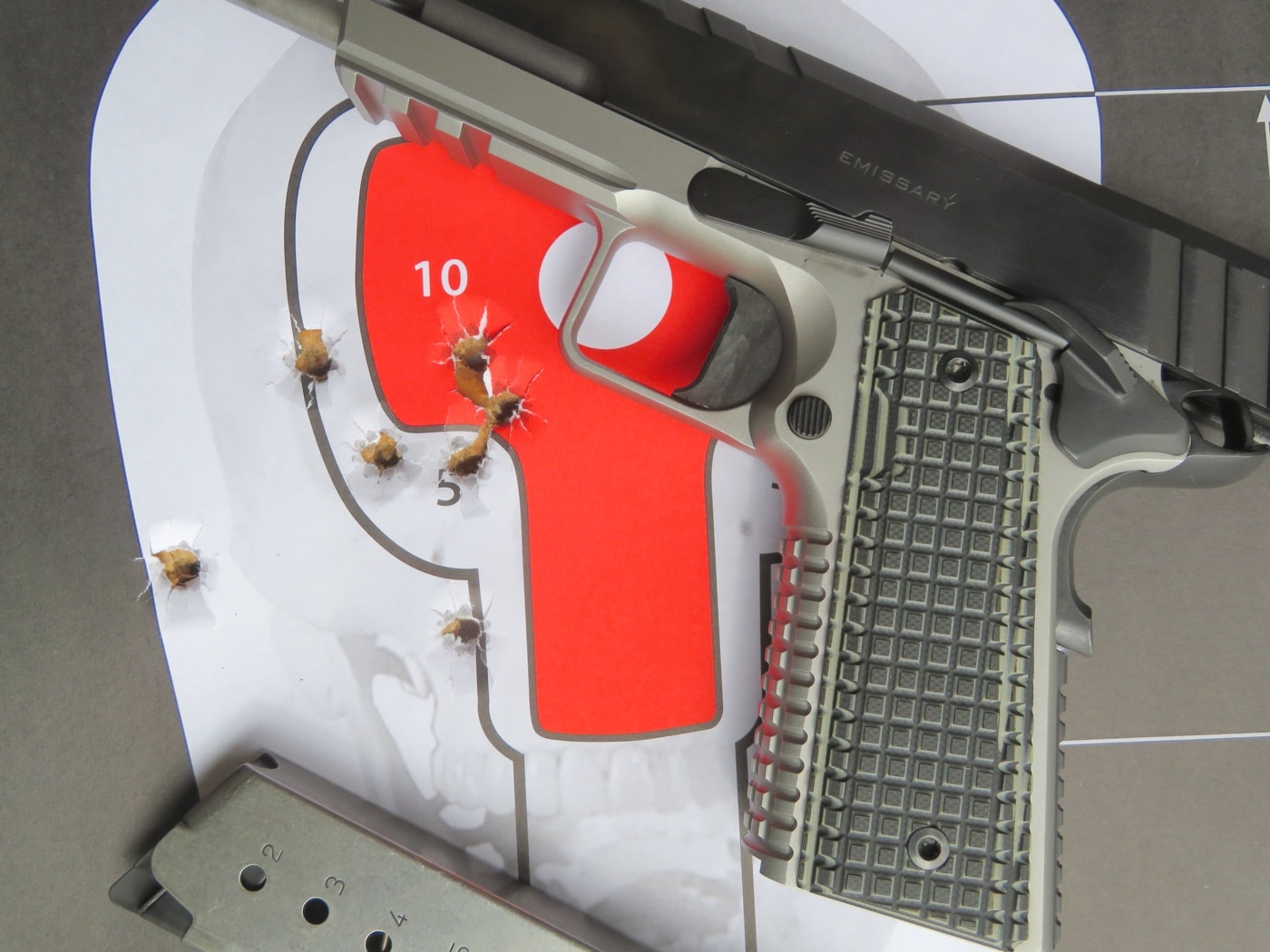
Moving to the Bill Drill, I slightly changed my grip with the flat trigger, and the hits were dead center. I felt that with the flat trigger, I could press anywhere on the flat surface and get a clean, smooth press and fire the six shots quickly while managing recoil. With the curved trigger, I could manage the speed and recoil, but found I myself looking for the deepest part of the curve for a consistent finger placement and trigger press.
Flat and Curved Trigger: Pros and Cons
In my opinion, the flat trigger provided a more consistent feel through the trigger press. The trigger also felt the same every time, even if my grip was not perfect each time; but if I pressed the top or bottom portion of the trigger, the trigger press was not as smooth. With the curved trigger, if I did not place my finger in the exact same spot every time, the press was not as clean. But the design of the curved trigger forces your finger to the center of the trigger for smoother movement.
Am I changing my 1911’s over to one trigger type? Nope. I’ll continue to use both trigger types. It is all about preference. What’s the bottom line for me? I believe that neither a flat trigger nor a curved trigger is better than the other since it all comes down to personal preference. Still, there are differences between the two trigger types that may provide you with an added edge and better trigger control. So, try out both and decide for yourself!
Editor’s Note: Please be sure to check out The Armory Life Forum, where you can comment about our daily articles, as well as just talk guns and gear. Click the “Go To Forum Thread” link below to jump in and discuss this article and much more!
Join the Discussion
Featured in this article
Continue Reading
Did you enjoy this article?

 256
256




